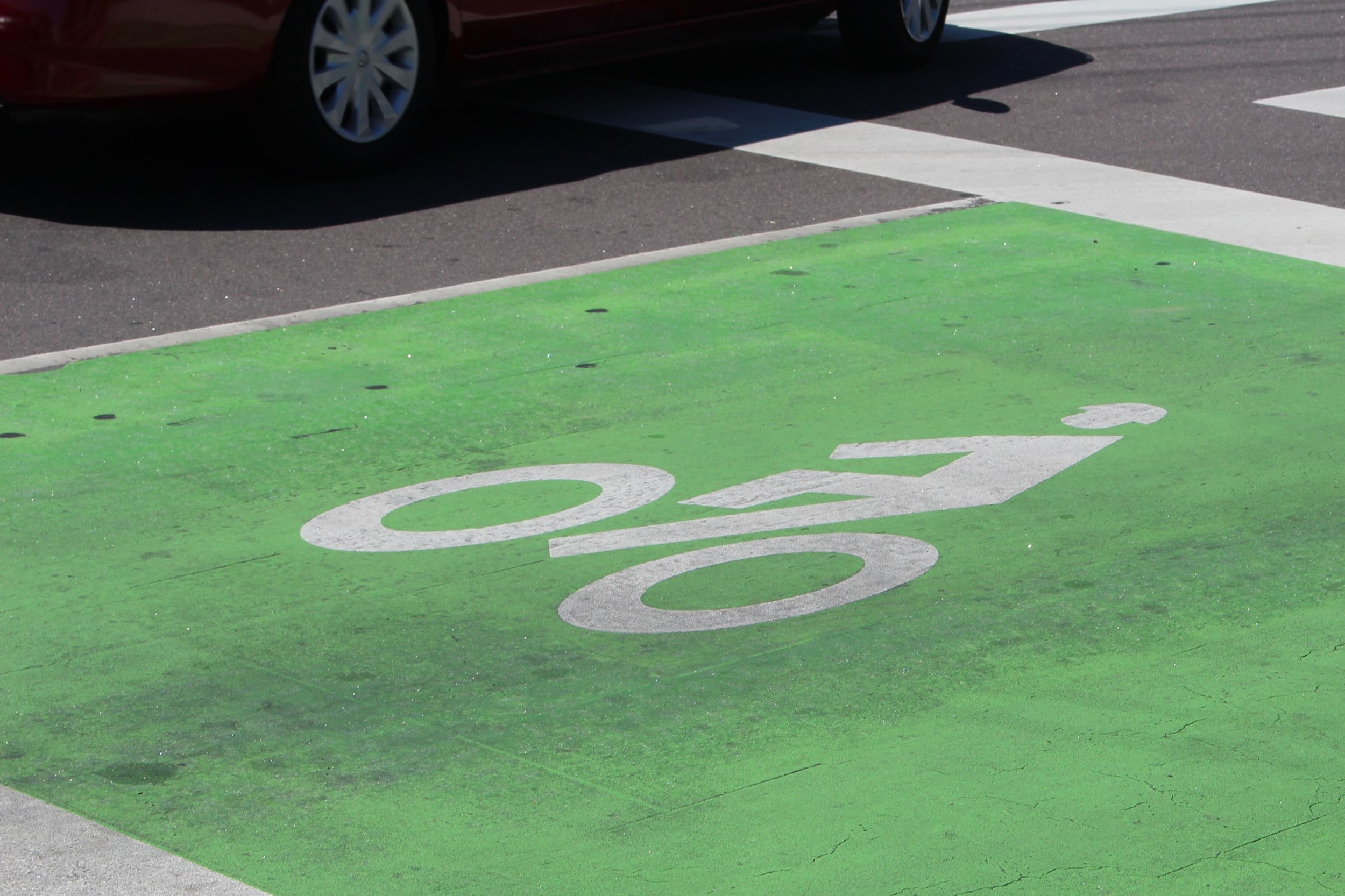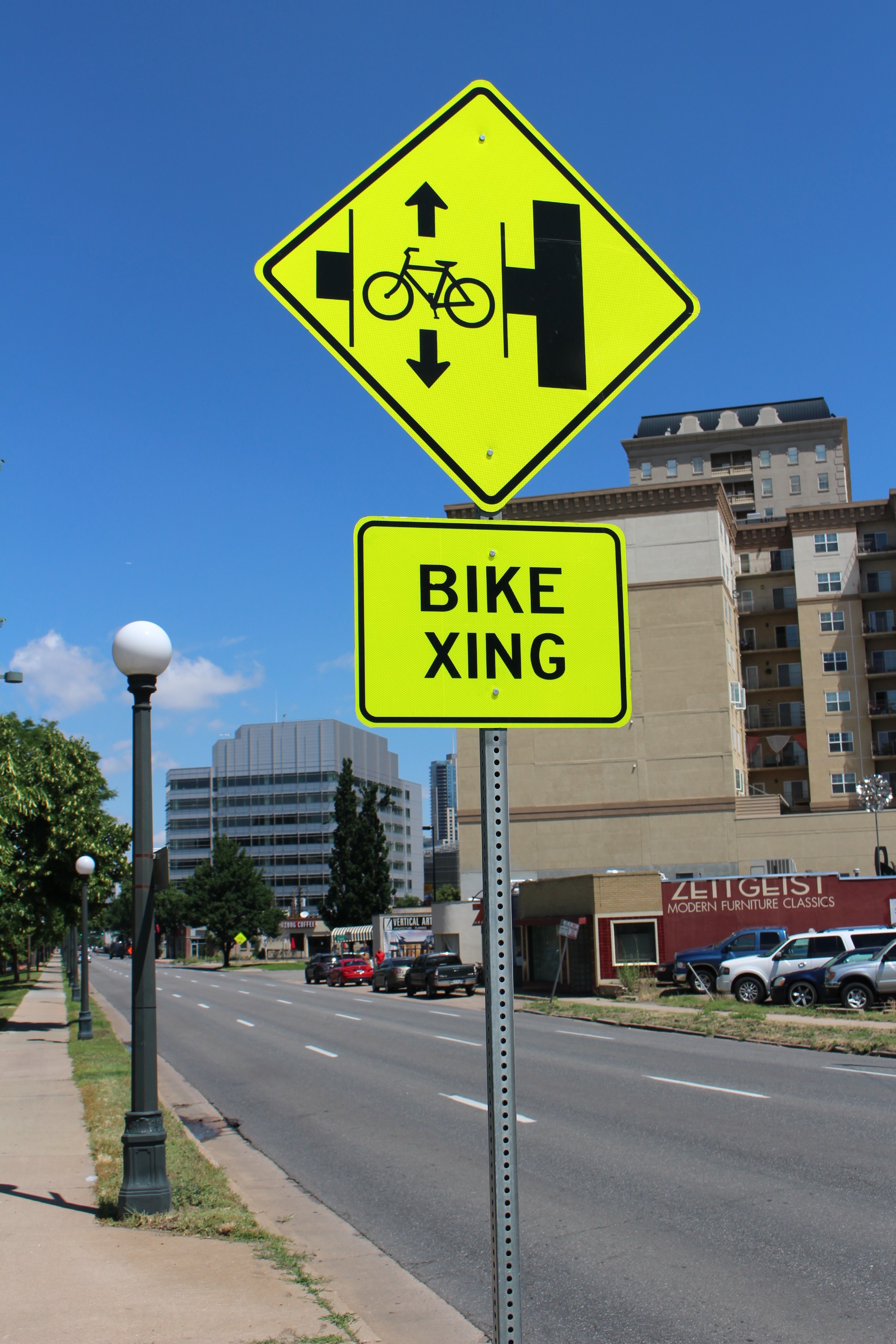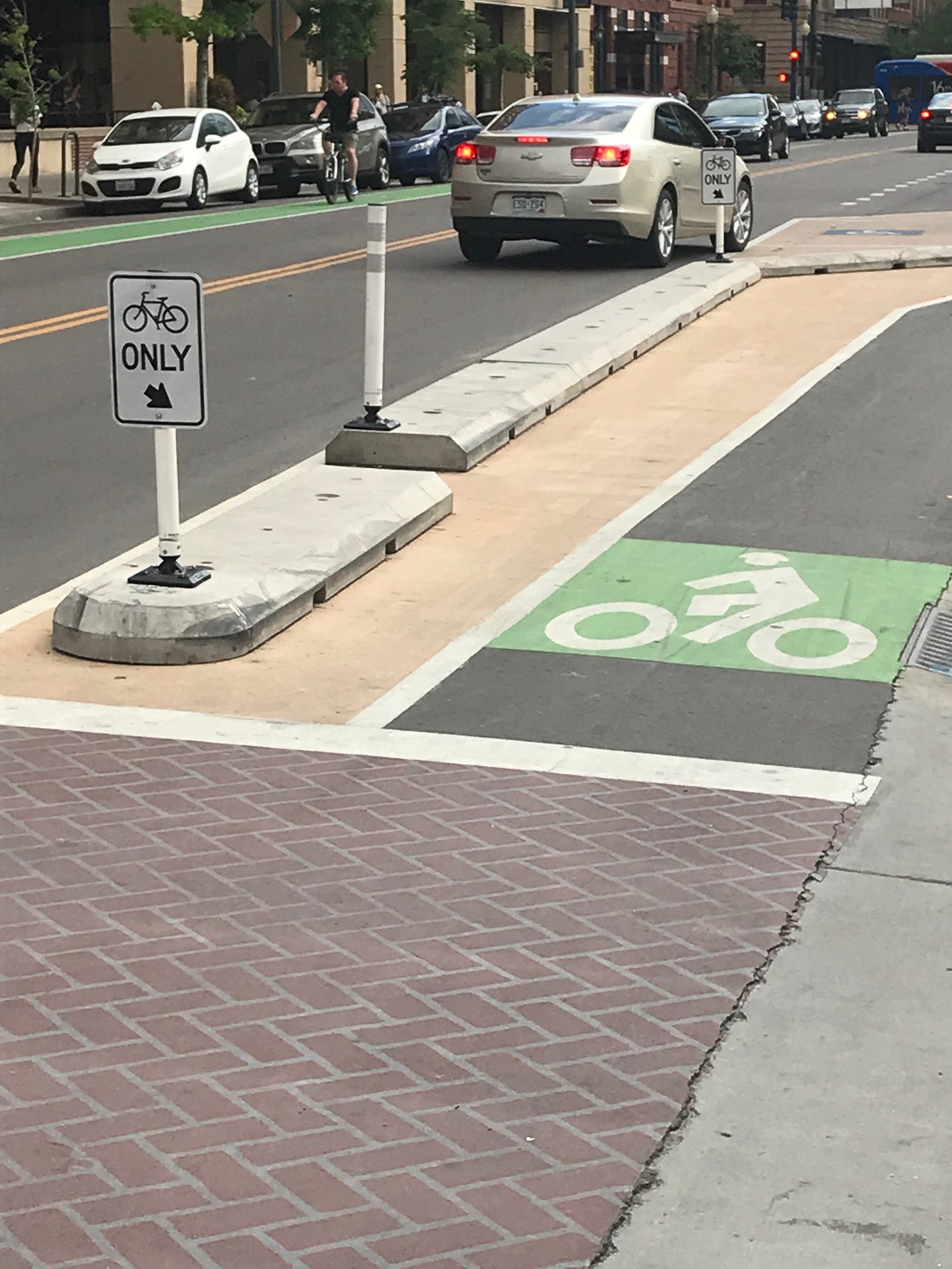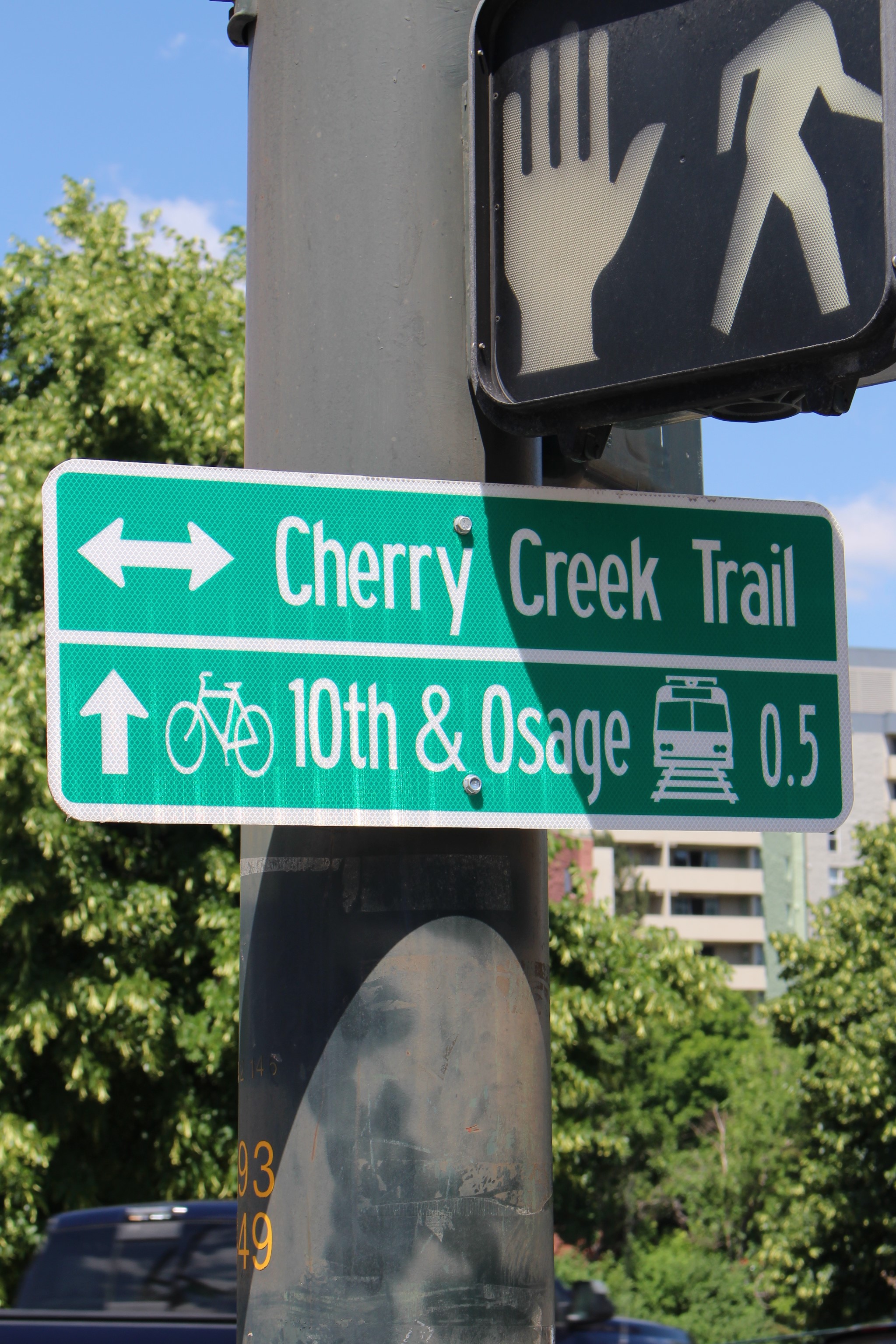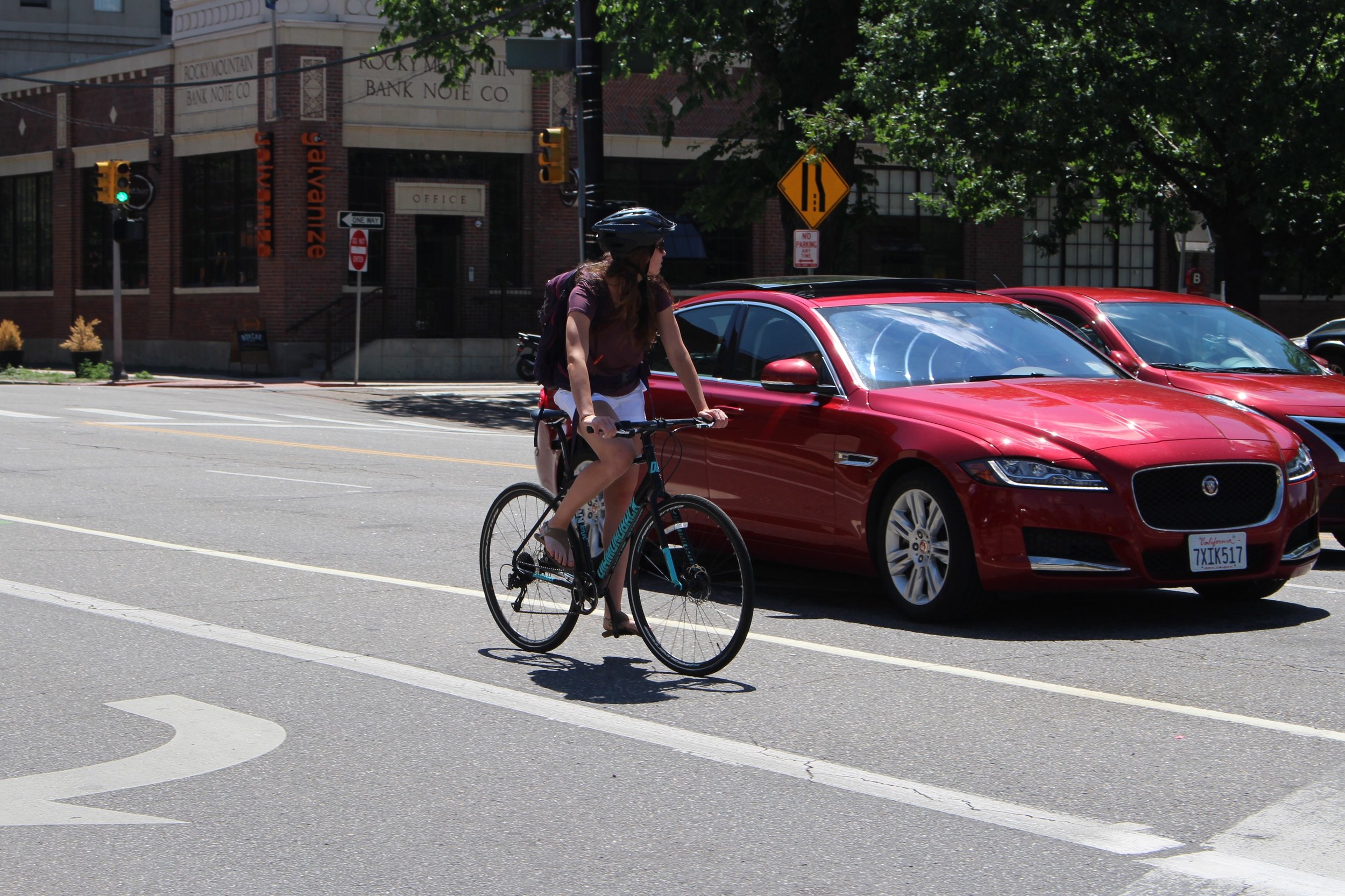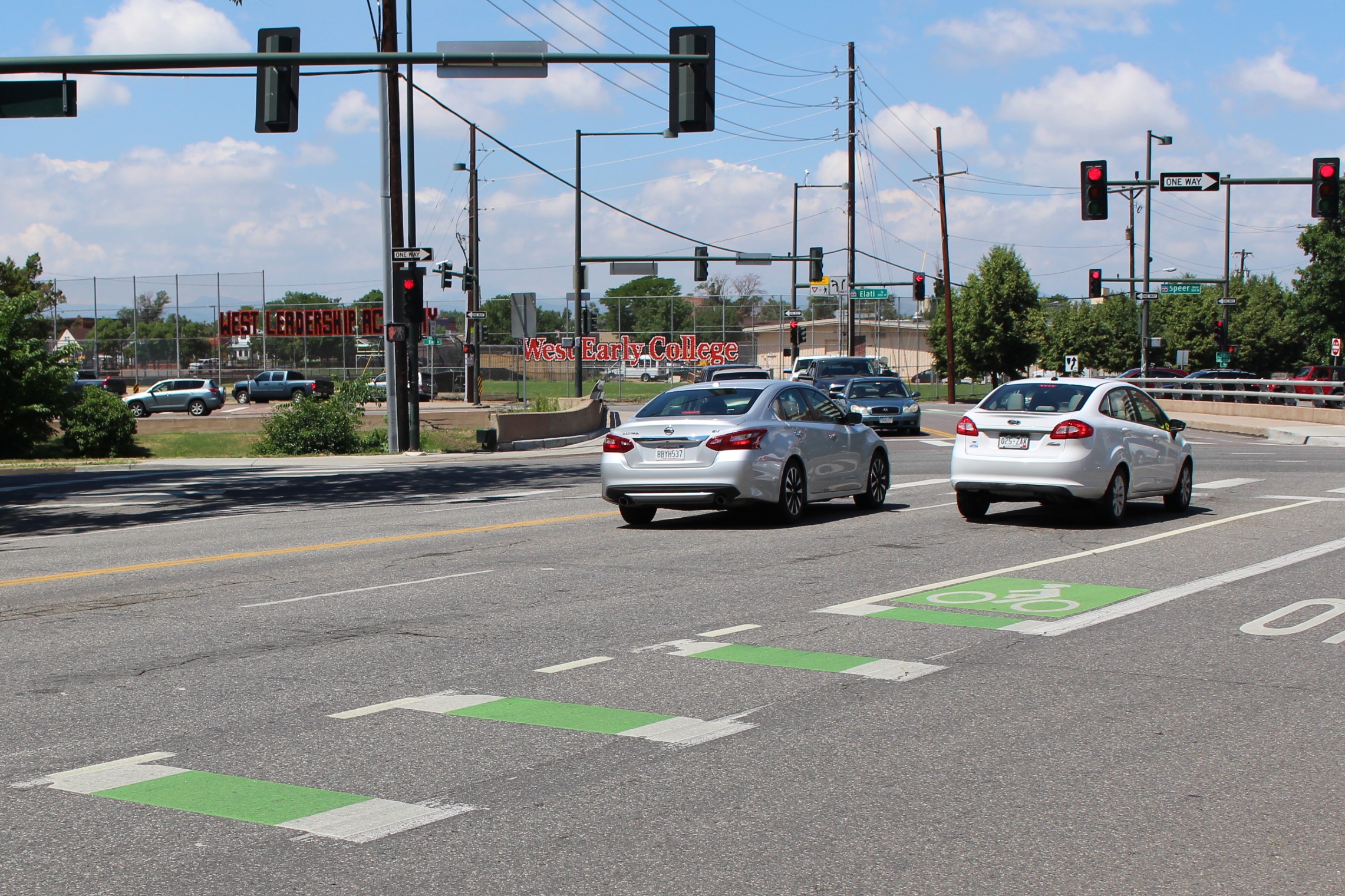Is Lane Splitting Unlawful?
By Maureen & Megan
No matter who you ask, it’s a controversial practice! Motorcyclists say it’s safer than sitting in traffic and eases traffic congestion. Cyclists maintain that it gets them ahead of traffic at intersections so they can be more visible to cars. Motorists argue that it’s dangerous and risky.
Lane splitting, also referred to as stripe riding or white lining, is the practice of riding a bicycle, motorcycle or any other two-wheeled vehicle between rows of slow-moving traffic driving in the same direction. Lane filtering refers to riding between lanes going in the same direction in stopped traffic.
California is currently the only state that allows motorcycle lane splitting.
So, what does this mean for cyclists? We received the following inquiry from a cyclist about lane splitting/filtering:
Is any part of the CO Law applicable to lane filtering or splitting?
For example, is it legal for a cyclist to ride between stopped traffic in their lane and parked cars on the right or to ride between two lanes of stopped traffic?
There is no statute in Colorado that specifically prohibits cyclists from lane splitting or lane filtering; however, the conclusion has always been that since it’s not legal for motorcyclists, cyclists should not do it either.
Furthermore, a cyclist has the same rights and duties as the driver of any other vehicle, so they should follow the same rules when it comes to overtaking and passing another vehicle on the left or right.
"The law says you cannot overtake a vehicle traveling in the same lane and direction, with certain exceptions. Lane splitting has two major concerns. #1) as cyclists, the law requires you be given 3-feet when being passed. Should it not be the same for a cyclist passing a motor vehicle? #2) we already have a problem in Colorado with motorists not expecting cyclists to be where they have the right to be (think right-hook turns). The concern is if lane splitting is permitted, how many accidents and incidents of road rage will we have until the motoring public comes to terms with this mentally and in their driving behavior?" says Frank Barr, Police Officer for the City of Golden.
Chances are, if a cyclist chooses to pass between lanes of cars, or pass up the right side (where there is no bike lane), if a collision occurred- for example, if a car in the right lane suddenly decided to make a right turn having no idea a cyclist has pulled up alongside them, the cyclist will be found at fault, or half-at-fault. Anytime a cyclist does something to deprive themselves of the 3-foot buffer- like pulling alongside the right side of stopped cars, between the car and a curb, if a collision occurs, the cyclist is going to share some blame.
Consider the following scenarios that could cause a cyclist serious injury or death if lane splitting or filtering forward:
Cyclist is riding between two lanes of moving traffic when a motorist switches lanes unexpectedly and crashes into the cyclist
Cyclist gets doored when riding between traffic lanes when a passenger opens car door to exit vehicle
Cyclist stops on the passenger side of the vehicle in the driver’s blind spot and is right-hooked by a turning vehicle at an intersection after filtering forward
When approaching an intersection, it is recommended that a cyclist takes the lane instead of lane splitting or filtering forward. League Certified Instructor Gary Harty prefers to take the lane and wait his turn at stop lights especially if there are only two or three cars ahead of him. “I don’t like to go ahead of the first car because I may not be visible and would be setting myself up for being right hooked,” he says.
Harty prefers to control his lane when turning left. If he is going straight, he will position himself next to the white line, either left or right of the line, the side with the least amount of traffic. “I understand both sides are legal and defend against right hooks. If traffic is slow I would like to control the thru lane.”
Cutting through traffic with rows of cars on both sides doesn’t give a cyclist adequate space either, especially considering that motorists have to give cyclists three-feet when passing.
Denver has 130 miles of bike lanes
“In a perfect world, you would have a minimum of four feet between you and parked cars on your right to prevent being doored and another three feet on your left between you and the projections of the moving vehicles on your left. If you give yourself three feet in which you occupy space, this is a total of ten feet minimum between parked cars and the moving traffic lane. I can’t think of any place in this area where that space exists. Our bicycle infrastructure has not reached that level yet. Therefore, if a cyclist is going to ride into that space that is much less than ten feet, there is a great deal of risk involved and potentially a conflict with CRS that states you should pass slower vehicles on the left,” says Harty.
As bicycling becomes more of an accepted form of transportation across the country, cities are working to make improvements to bicycling infrastructure. According to its website , the City of Denver has:
more than 100 miles of multi-use trails.
130 miles of bike lanes.
39 miles of sharrows, and almost 400 miles of signed bike routes.
Denver’s Bicycle Program is improving on-street facilities and creating connections between Denver's neighborhoods and destinations. Bicycle traffic signals, green pavement marking, designated bike lanes, bikeways, buffered lanes and green bike boxes are being installed around the city.
Green pavement markings in Denver notifying motorists of the presence of bicyclists
Bike boxes and bike lanes make it possible for cyclists to avoid lane splitting/filtering to get ahead of vehicles at intersections. Cyclists position themselves ahead of cars in the bike box and have priority to move into the intersection when the light turns green. Motorists must wait behind the green bike box at the white stop line. This gives cyclists priority to move through the intersection.
Bike box at 11th and Speer in Denver
People for Bikes has been working hard to add these green lanes and boxes with their “green lane” projects- which provide funding to cities to make it possible for the addition of this infrastructure. These lanes and the bright green paint make it much safer for cyclists and allow them to move to the front of an intersection legally. (Read more here: https://peopleforbikes.org/green-lane-project/).
Expanding and improving bicycling infrastructure to make bicycling more accessible and safe will take time. In the meantime, use caution when you are cycling and don’t put yourself in a situation where splitting the lane or filtering forward could result in injury.




